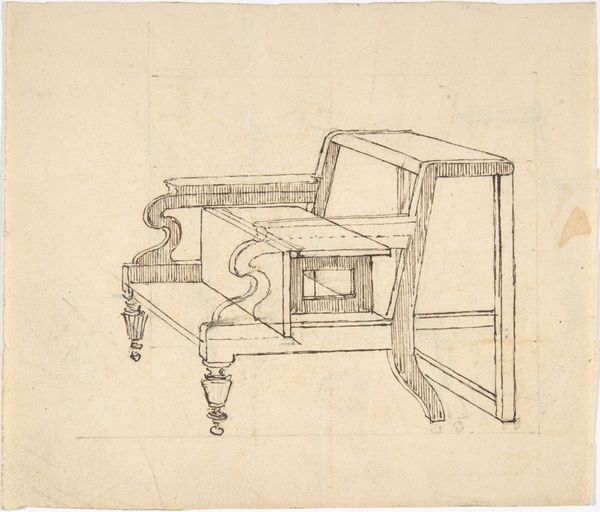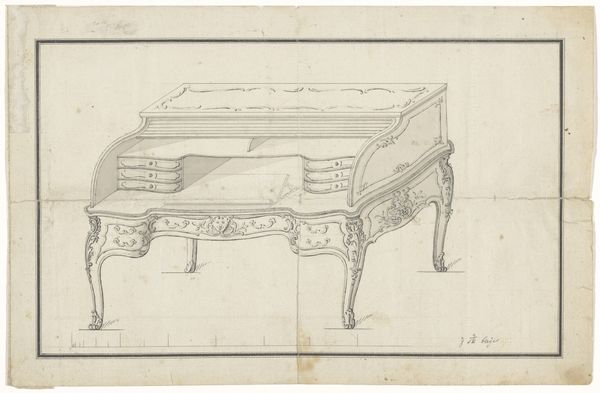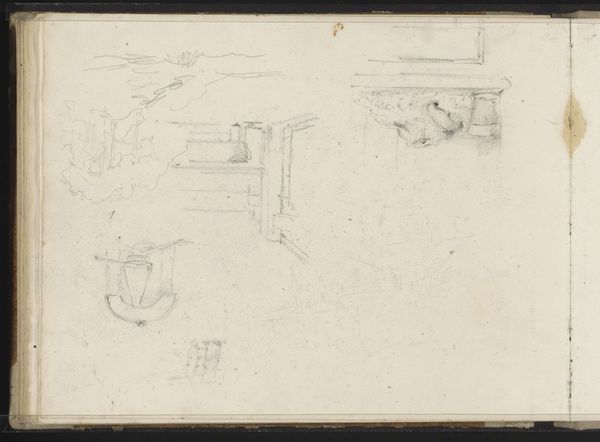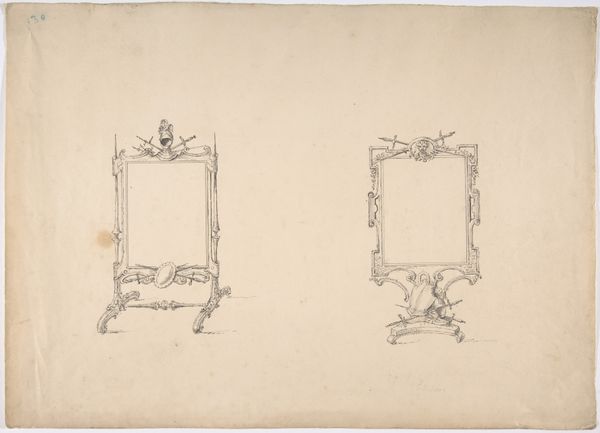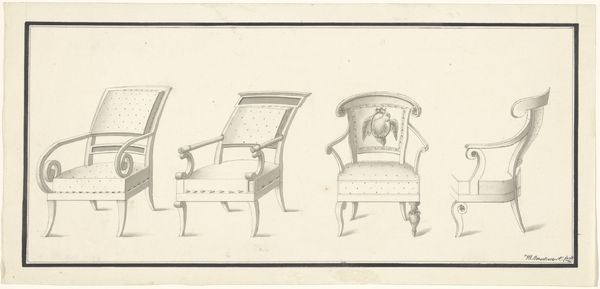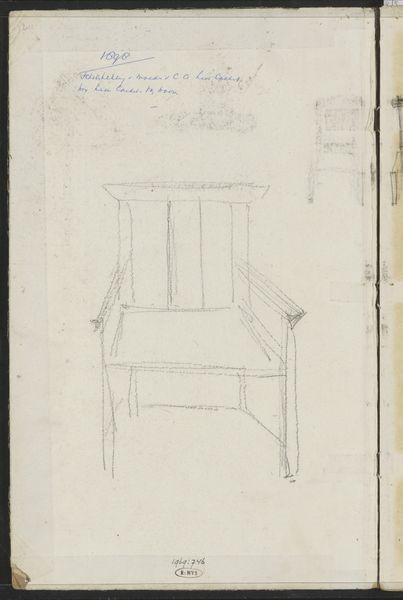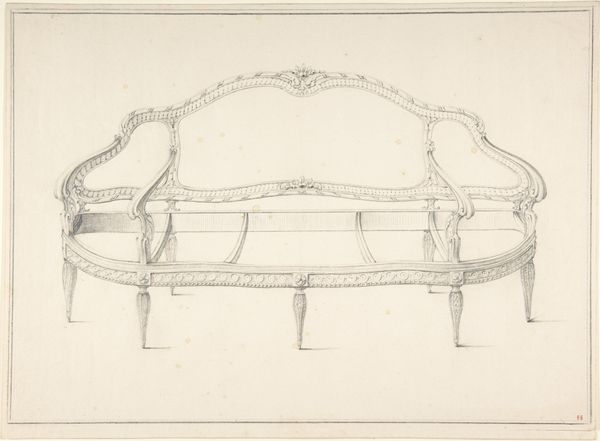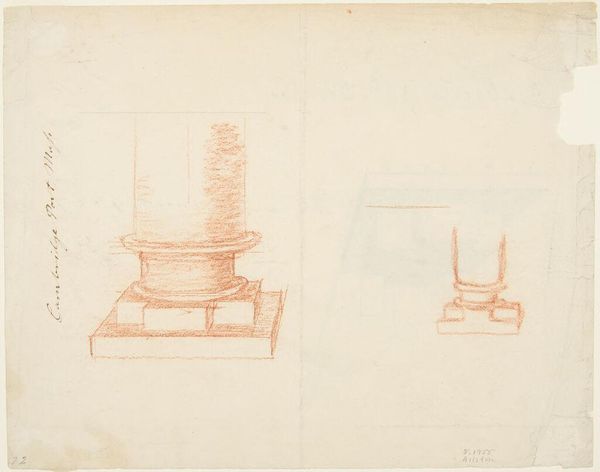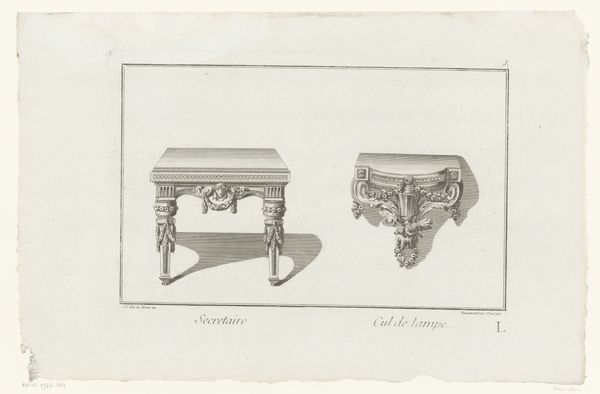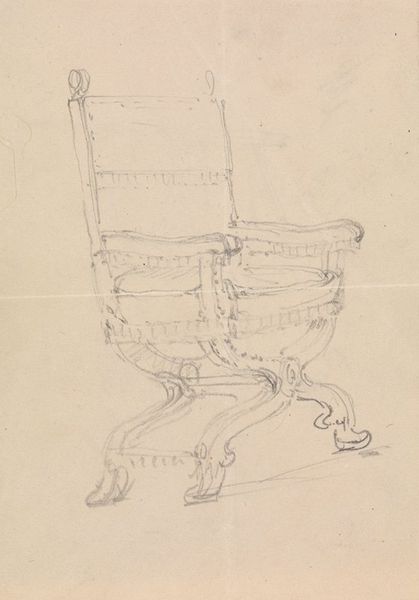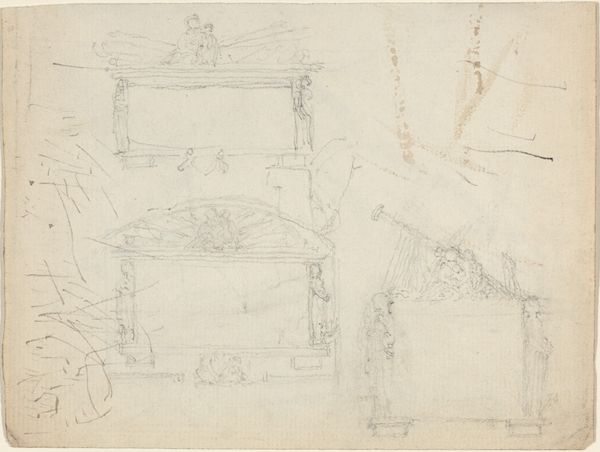
Studies for Two Armchairs (recto); sketches for Three Chairs and Parts of a Fourth (verso) 1795 - 1810
0:00
0:00
drawing, pencil
#
portrait
#
drawing
#
neoclacissism
#
form
#
geometric
#
pencil
#
pencil work
Dimensions: 4 5/8 x 7 7/8 in. (11.8 x 20 cm)
Copyright: Public Domain
Curator: Here we have Charles Percier’s "Studies for Two Armchairs," dating roughly between 1795 and 1810. What are your first thoughts on this sketch? Editor: Light, airy... skeletal. There’s a provisional quality; the artist seems to be figuring out the relationship between form and function. You almost feel like you can disassemble these chairs and understand their making. Curator: Precisely. The materiality, even in this nascent form, speaks volumes about neoclassical design. Percier, celebrated for his work with Napoleon, showcases here how readily even the most quotidian object, like an armchair, can become a canvas for ideological projection. Look at the crisp lines and geometric rigour! Editor: Yes, that attention to detail… consider how this level of precision necessitates workshop control and the division of labour. Percier likely wouldn't have crafted these chairs himself but provided models and designs for production. It is interesting to contemplate the hierarchy inherent in this process of creation and consumption. Curator: Very astute observation. And note the paper itself – likely a higher-quality stock for preliminary drawings, further indicating Percier’s established position and the importance given to his design process. Pencil work too – the accessibility and relative economy of the medium hints at the potential for wider distribution and reproduction of these designs. Editor: Also interesting to consider how museums and collections then shaped tastes and validated certain design aesthetics. Pieces like this helped to formalise Neoclassicism. Where these armchair designs widely adopted in the bourgeois or aristocratic home? Who could participate in this aesthetic trend, or would instead have laboured to produce such designs? Curator: A good question to ponder as we move on. The drawing offers an insight not just into Percier's process, but also into the economic and social infrastructures necessary to produce and circulate such design aesthetics in Napoleonic France. Editor: Agreed. An intimate glance behind the scenes, exposing the material conditions that enabled an Empire.
Comments
No comments
Be the first to comment and join the conversation on the ultimate creative platform.
